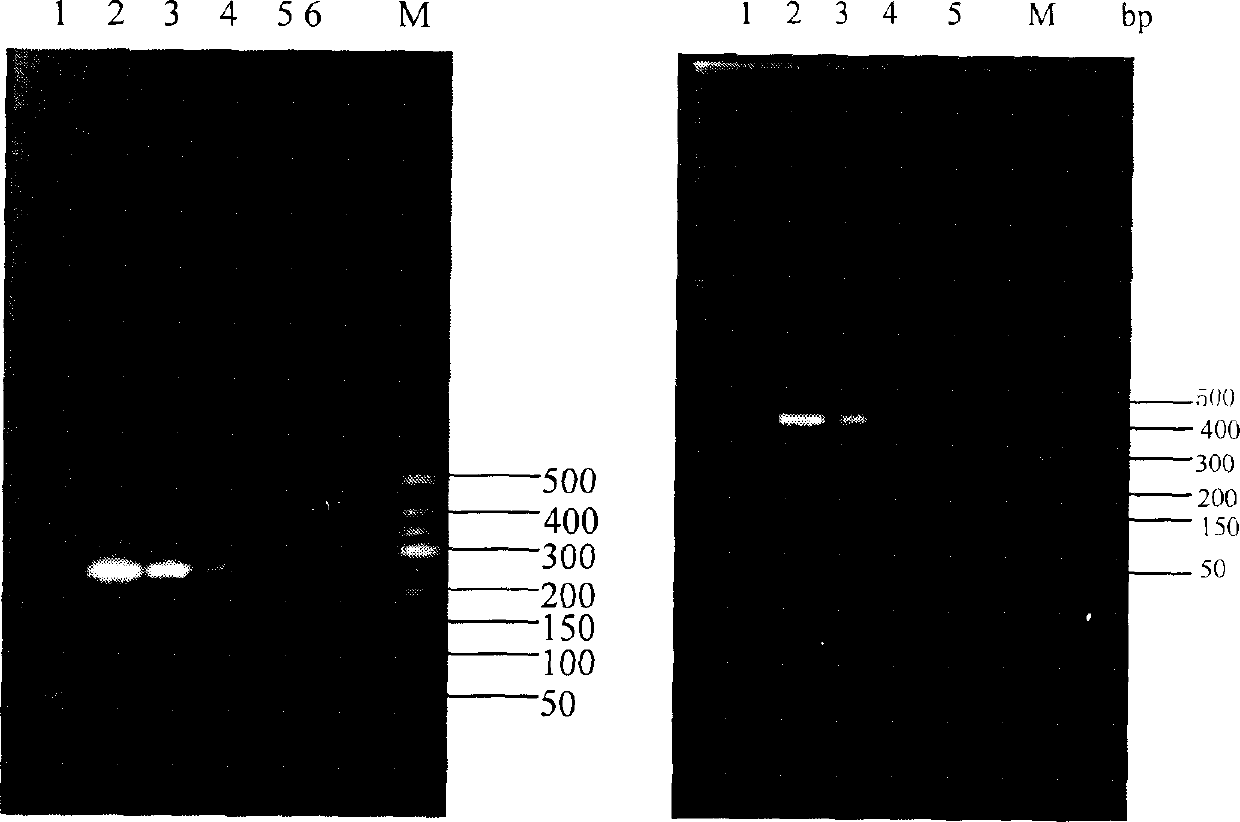Method for separating and purifying insect pathogenic fungoid thallus from infected insect haemolymph
A technology for the separation and purification of pathogenic fungi, applied in biochemical equipment and methods, fungi, microorganism measurement/inspection, etc., can solve the problems of time-consuming, difficult detection of pathogenic fungal genes, laborious and other problems
- Summary
- Abstract
- Description
- Claims
- Application Information
AI Technical Summary
Problems solved by technology
Method used
Image
Examples
Embodiment Construction
[0028] A method for separating and purifying entomopathogenic fungal cells from hemolymph of susceptible insects, characterized in that: hemocytes of susceptible insects are lysed by enzyme treatment and their DNA and RNA are degraded by enzyme treatment, followed by separation and precipitation. The pathogenic fungal cells were purified and obtained; during the whole enzymatic hydrolysis process, PCR was used to detect the conserved sequence monitoring, and finally PCR and RT-PCR were used to detect the conserved sequences to identify the entomopathogenic fungal cells.
[0029] In a word, the theoretical basis of the present invention is designed by utilizing the structural differences between animal cells and fungal cells, because the outermost layer of animal cells is wrapped by cell membranes, and the cell membranes are composed of double-layer phospholipids and membrane proteins. Therefore, proteinase K is used to specifically degrade proteins to degrade membrane proteins ...
PUM
 Login to View More
Login to View More Abstract
Description
Claims
Application Information
 Login to View More
Login to View More - R&D
- Intellectual Property
- Life Sciences
- Materials
- Tech Scout
- Unparalleled Data Quality
- Higher Quality Content
- 60% Fewer Hallucinations
Browse by: Latest US Patents, China's latest patents, Technical Efficacy Thesaurus, Application Domain, Technology Topic, Popular Technical Reports.
© 2025 PatSnap. All rights reserved.Legal|Privacy policy|Modern Slavery Act Transparency Statement|Sitemap|About US| Contact US: help@patsnap.com



